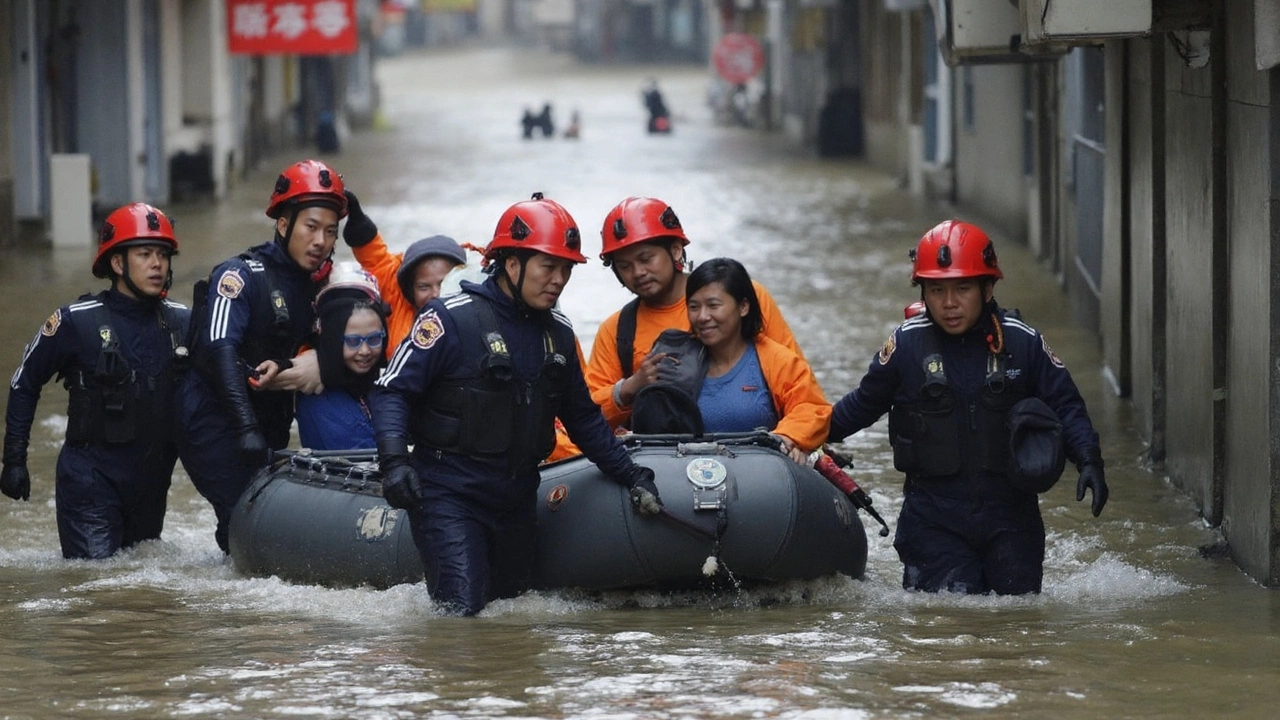Ragasa's Meteorological Rise
On September 17, a cluster of thunderstorms north of Yap began to organize. Within days it became a tropical depression, then a full‑blown typhoon. By September 22, the system had sharpened into a Super Typhoon Ragasa, boasting a central pressure of just 905 hPa and ten‑minute winds of 205 km/h. On the Saffir‑Simpson scale that translates to a Category 5‑equivalent storm with one‑minute winds touching 270 km/h.
What made Ragasa stand out wasn’t just its raw power; it held that intensity longer than most storms in the region. After battering the Philippines at peak strength, it surged across the South China Sea, keeping wind speeds high enough to trigger the highest warning level in Hong Kong.
Human Toll and Regional Impact
The storm’s path criss‑crossed four nations, each feeling a different kind of devastation.
Philippines: The first landfall hit Panuitan Island in Calayan, Cagayan, at 15:00 PHT on September 22. Massive rain triggered flash floods and landslides across Northern Luzon. Whole villages were cut off, and emergency crews rushed to rescue trapped families.
Hong Kong: The Hong Kong Observatory raised Hurricane Signal No. 10, marking only the second such alert this year and the first double‑issue since 1964. Ragasa passed just 50 km south of the city, delivering wind gusts that smashed windows and toppled trees. The city’s coastal districts saw significant storm surges, forcing thousands onto evacuation shelters.
China: The storm made its second major landfall on Hailing Island, Guangdong, at 17:00 CST on September 24, then struck Beihai, Guangxi, the next morning. Coastal factories halted production, and power outages left millions without electricity. Heavy rainfall swelled rivers, prompting the government to deploy the army for sandbagging and rescue missions.
Taiwan: A tragic collapse of the Matai'an Creek Barrier Lake left 46 people missing. The sudden flood swept away homes and roads, turning a local disaster into a national emergency.
Vietnam: By September 25, Ragasa had weakened to a tropical depression but still packed enough rain to cause landslides in Quảng Ninh province. The final landfall marked the end of a week‑long ordeal for the region.
The overall casualty count stands at 25 confirmed deaths, 143 injuries, and 46 missing persons. Over 2 million residents were instructed to evacuate at various points, and emergency shelters filled across the affected countries.
- 25 confirmed fatalities
- 143 injured
- 46 missing (Taiwan)
- Multiple infrastructure damages: roads, ports, power grids
Ragasa’s legacy will be studied for months. Meteorologists are already comparing its pressure record to past super typhoons, while disaster planners review evacuation protocols that saved countless lives. The storm underscored how a single system can ripple across borders, turning weather into a shared humanitarian challenge.
